Posts Tagged: bluebeard
Photobombing a Honey Bee
Ready? Set? Go? The search party is almost ready to start. If you're lucky, you'll net the prize before Art Shapiro does. Art Shapiro, distinguished professor of evolution and ecology at the University of California, Davis, has announced his...
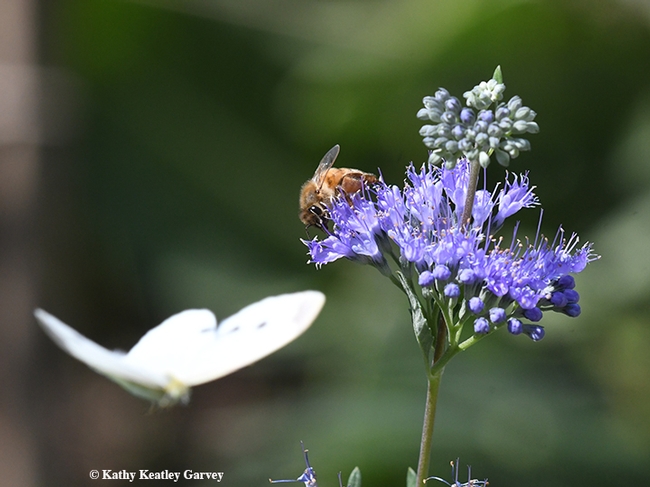
A cabbage white butterfly photobombs a honey bee on a bluebeard (Caryopteris x clandonensis). This image was taken in Vacaville, Calif. (Photo by Kathy Keatley Garvey)
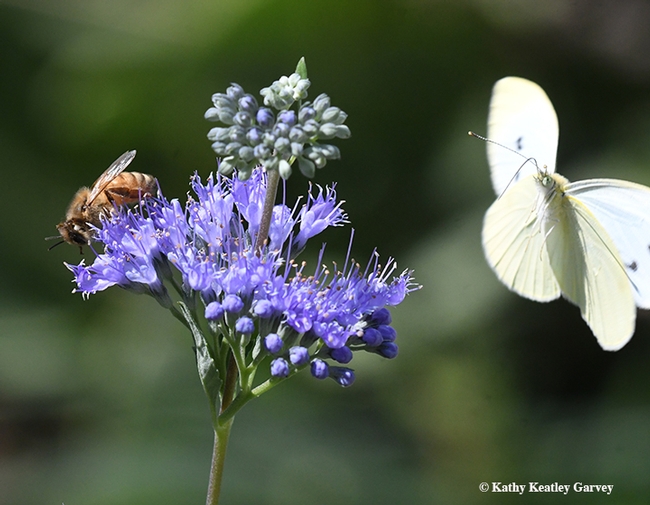
Joy, oh, joy, another photobomb opportunity! The cabbage white circles the honey bee nectaring on bluebeard (Caryopteris x clandonensis). (Photo by Kathy Keatley Garvey)
Bully in the Bee Garden
He's the bully in the bee garden. If you've ever watched the male European wool carder bee (Anthidium manicatum) patrolling "his" flower patch, you'll see him targeting insects several times larger than he is. Take the case of the Valley carpenter bee...
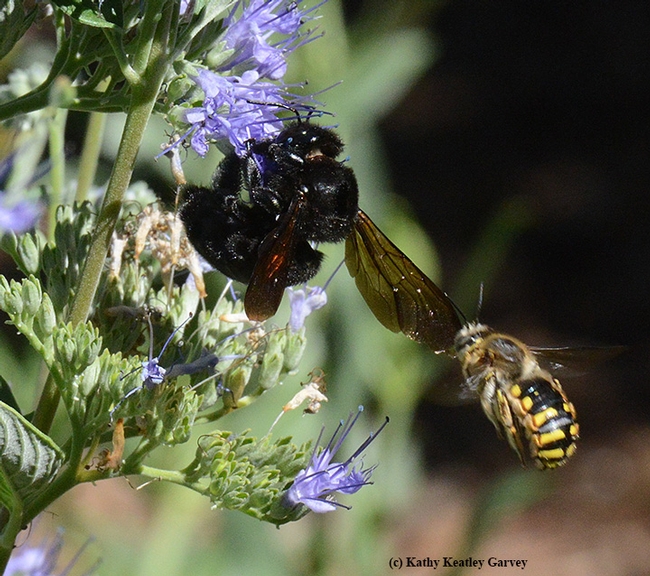
Male European wool carder bee (Anthidium manicatum)targets a female Valley carpenter bee (Xylocopa varipuncta) on a bluebeard (Caryopteris). (Photo by Kathy Keatley Garvey)
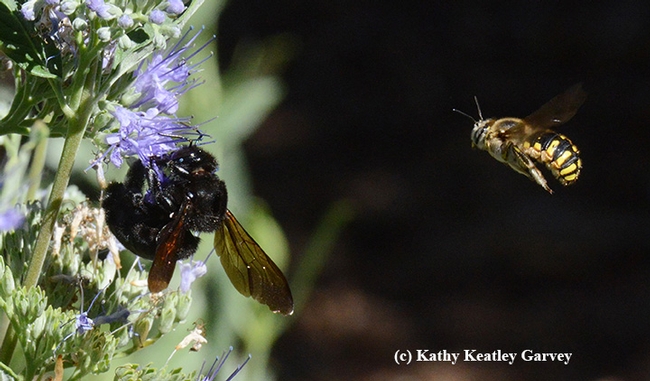
Male European wool carder bee (Anthidium manicatum) takes another swipe at the female Valley carpenter bee (Xylocopa varipuncta) on a bluebeard (Caryopteris). (Photo by Kathy Keatley Garvey)
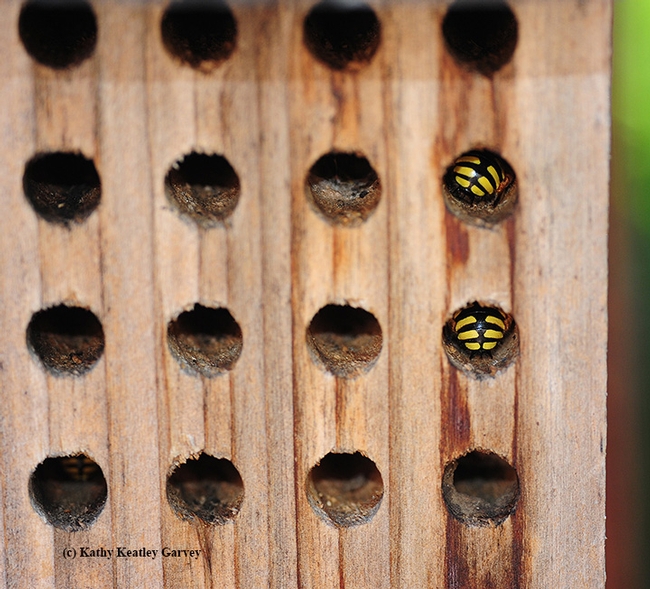
Sleepytime! Male European wool carder bees sleeping inside a mason bee condo, bee housing meant for blue orchard bees. (Photo by Kathy Keatley Garvey)
Love Out of the Blue
Birds do it...bees do it... You've probably seen the territorial male European carder bees on patrol. They dart through the stems of a nectar treasure, such as bluebeard (Caryopteris 'Blue Mist'), knocking off all floral visitors. They're trying to save...
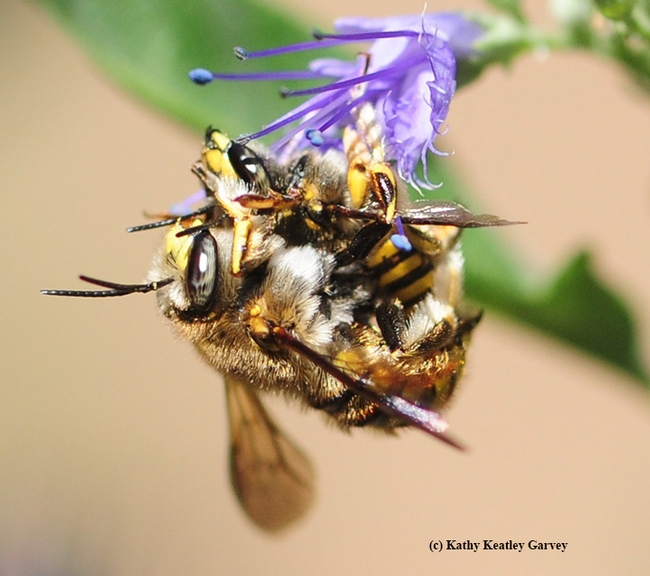
European male carder bees mating. The male, the larger bee, is about the size of honey bee. The European carder bees were introduced in New York in 1963 and became established in California in 2007, scientists say. (Photo by Kathy Keatley Garvey)
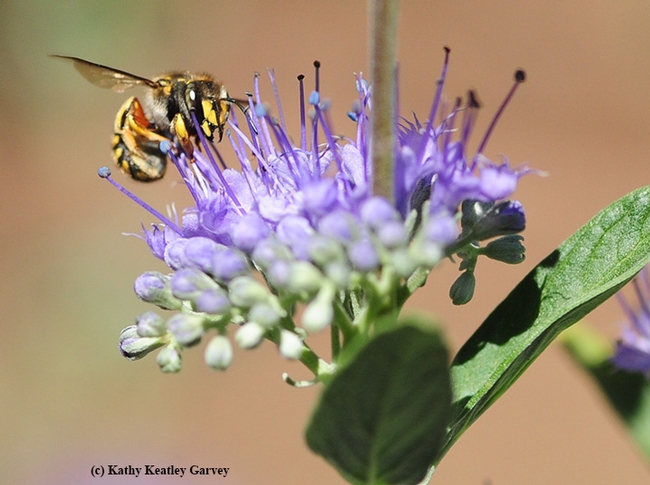
A female European carder bee sipping some nectar from bluebeard, Caryopteris "Blue Mist." (Photo by Kathy Keatley Garvey)
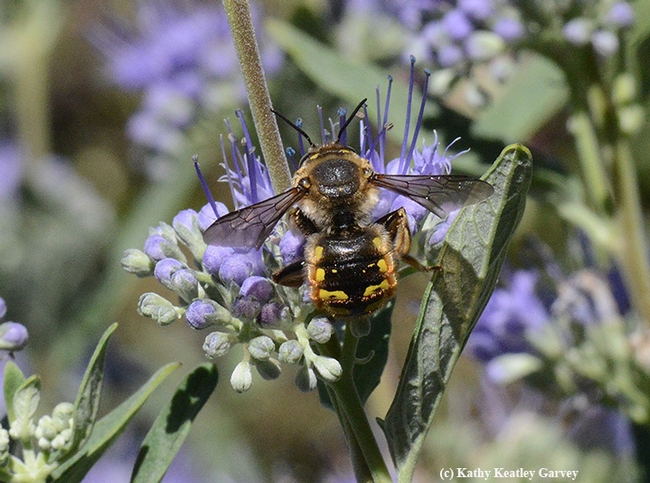
A male European carder bee pauses during patrol for nectar refueling. (Photo by Kathy Keatley Garvey)
Catch Me If You Can
Do they ever slow down? Not much. The male European wool carder bee (Anthidium manicatum), a yellow and black bee about the size of a honey bee, spends most of the day defending its "property" (food) from other visitors. It's so territorial that it...
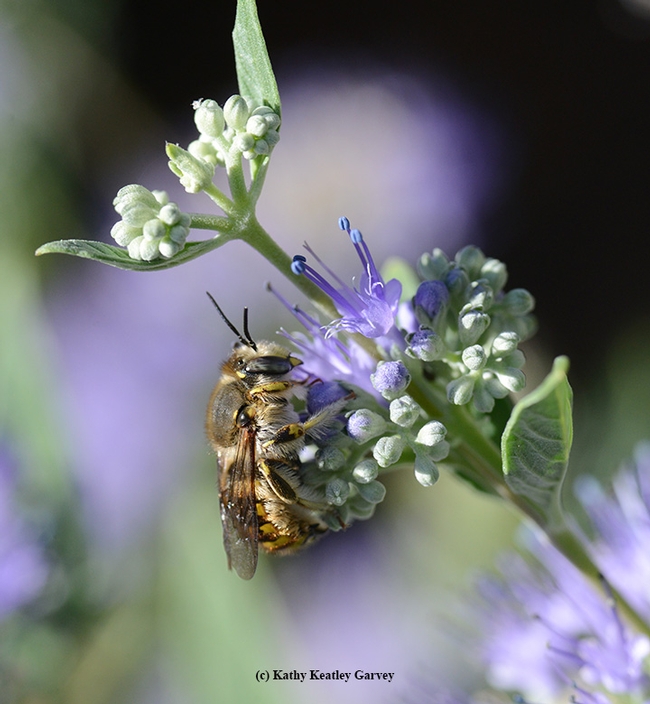
A male European wool carder bee, Anthidium manicatum, warms its flight muscles on a bluebeard blossom (Caryopteris clandonensis). (Photo by Kathy Keatley Garvey)

Morning sip of nectar for a wool carder bee is like a morning sip of coffee for us humans. (Photo by Kathy Keatley Garvey)
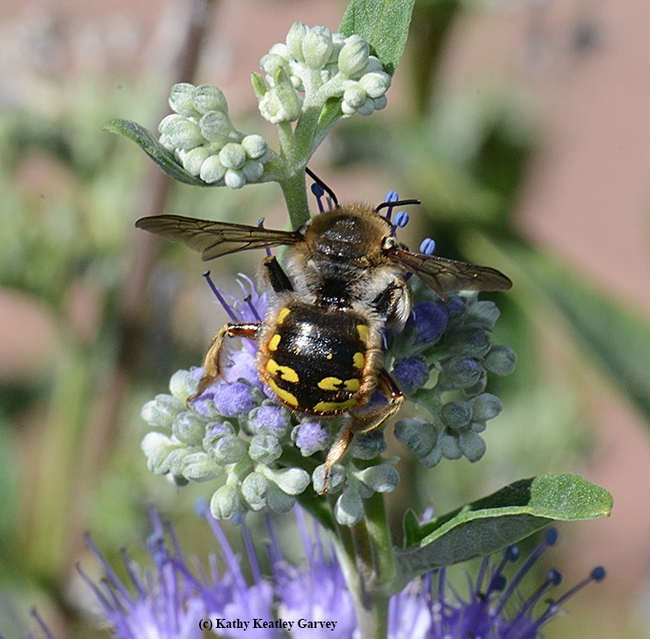
Dorsal view of a male European wool carder bee. (Photo by Kathy Keatley Garvey)

Well, hello there! This male wool carder bee eyes the photographer. (Photo by Kathy Keatley Garvey)
'Double-Spined Murder Clamps' at the Ready
So here's this tiny praying mantis hovering over a spider's web in the bluebeard (Caryopteris clandonensis) in our pollinator garden. In the web are freshly caught prey, including a honey bee. Now the praying mantis is known for snatching and devouring...
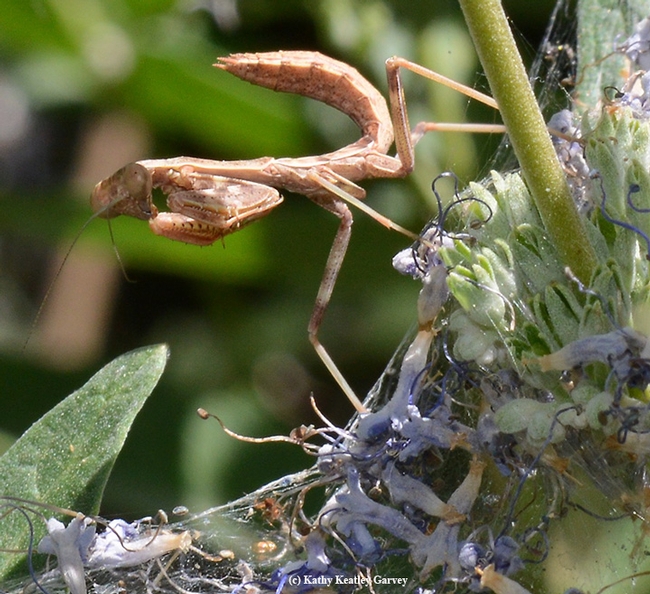
A young praying mantis keeps looking down at a spider's web in the bluebeard blossoms. (Photo by Kathy Keatley Garvey)
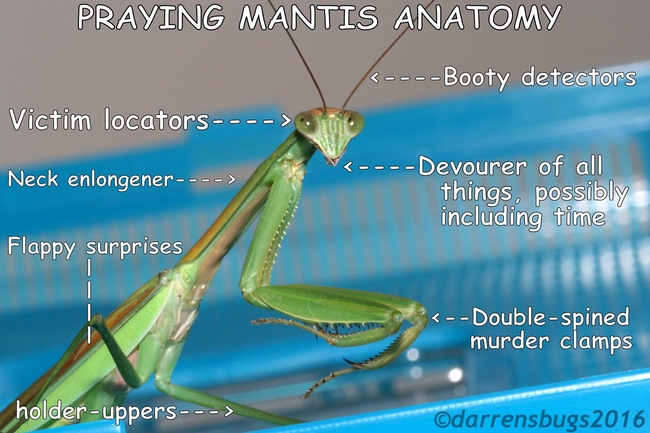
If you've ever been puzzled by all those anatomical parts of a praying mantis, no worries. Macro photographer and life-long entomology enthusiast Darren McNabb of Darren's Bugs has figured it all out. (Meme used with permission)

